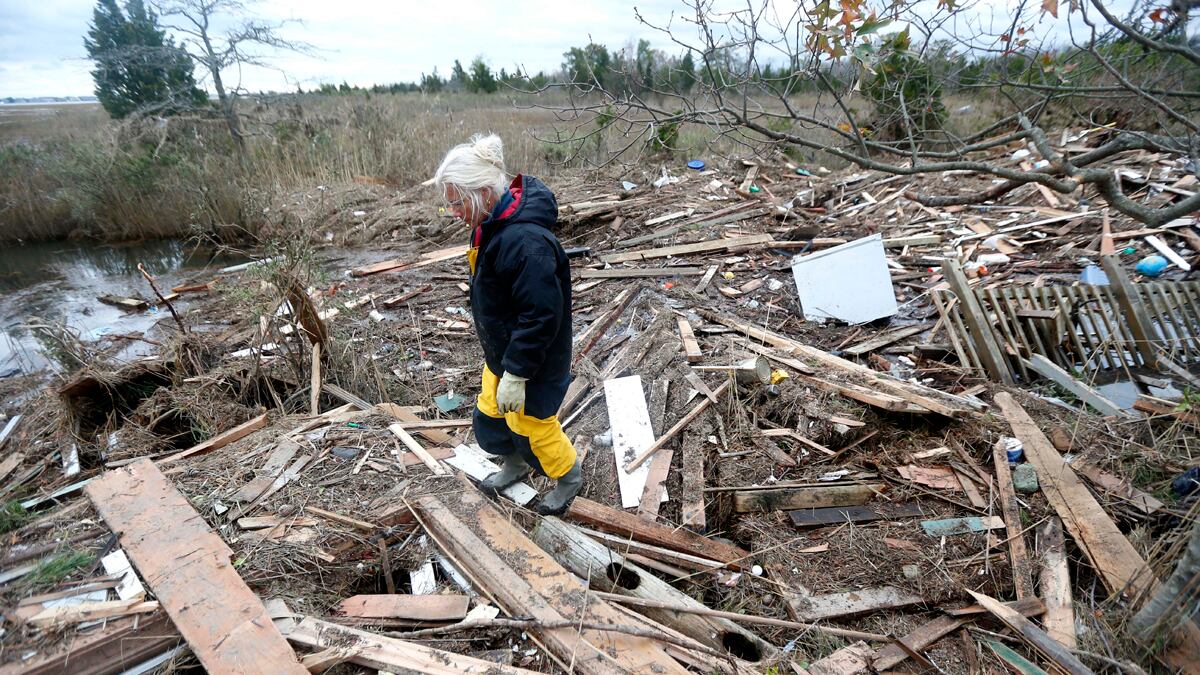Power outages that could last until late November, gas shortages, and a snarled public transportation system in New York, New Jersey, and Connecticut have more than doubled the estimated economic costs of Superstorm Sandy from initial estimates.

The insurance modeling firm Eqecat on Thursday released new estimates for both insured losses (amounts insurance companies will have to pay out) and total economic losses. Eqecat’s first estimates, widely cited in the media, put insured losses at $5-$10 billion and economic losses at $10-$20 billion. But after gathering more data, it boosted the loss estimates severely: insured losses of between $10 and $20 billion, and total economic losses of between $30 billion and $50 billion. These figures would put Sandy among the most economically damaging disasters in the United States. Moody’s has projected Sandy’s total economic cost from both property damage and depressed output at $50 billion. That’s just below the total cost of Hurricane Andrew, but well below the $157.1 billion and $98.6 billion in economic losses from Hurricane Katrina and the September 11 terrorist attacks respectively.
In a briefing Thursday afternoon, Eqecat employees explained that the estimate had gone up due to the prolonged effects that the storm will have on the densely populated and commercially vibrant New York and New Jersey coasts.
One specific factor that helps explain the wide range of the cost estimates is the potential payouts by insurers for business interruption. These types of policies can cover losses incurred due to the long-term effects of a storm—blackouts, disrupted transportation for employers and customers, and civil evacuations.
The loss estimates due to business interruption and lost income have risen for several reasons. There is considerable uncertainty about how long it will take for business owners and residents to come back to evacuated areas. It is unclear when power will be completely restored in many towns. And while some subways and trains have resumed running, the region’s vital public transit system could remain seriously degraded for at least another week.
The low end of the insured loss estimate would make Sandy the most expensive storm for insurers since Hurricane Ike in 2008. If estimates come in at the higher end of the range, it could be the costliest since Hurricane Katrina. David Smith, one of the lead modelers for Eqecat, said that the midpoint of the storm’s insured loss estimate, $15 billion, reflects the high cost of a “1-7 or 1-10 event that’s very significant in terms of impact.”
Another Eqecat employee specifically described the regional power losses as “unprecedented.” While he expects a full-on and successful restoration effort on the scale of Hurricane Andrew, the 1992 storm which caused some $54.5 billion in combined cost due to property destruction and loss of output, the restoration would will be massive and prolonged. Con Edison, the utility that serves New York, has said that power may not be fully restored until Nov. 10. The length of the expected restoration, combined with the disruption to transportation infrastructure, is another factor in the high potential cost of the storm.
Aside from its severity, Sandy’s size is making it a very expensive storm. The geographical scope of the damage is amplifying the costs. Sandy’s wrath poured out over Maryland and Virginia, New Jersey and Connecticut, New York and Pennsylvania. And that may make the ultimate restoration more expensive. Eqecat explained during its briefing that because of damaged transportation networks, the cost of the inputs necessary to rebuild—workers and materials mainly—will rise simply because of the high difficulty of moving people and things around. Think about how gas shortages and restrictions on vehicle traffic are impeding the movement of people and goods in and around New York.
The economic damage, however, is fairly concentrated, according to Moody’s. Mark Zandi, chief economist for Moody’s Analytics, estimated that 57 percent of the $20 billion in lost output due to the storm will be in the New York City metropolitan area. This disaster, Zandi argued, will not have the national economic effects of Katrina and 9/11, which affected business confidence and, (in the case of Katrina), energy prices. After 9/11, for example, the whole nation’s airline and tourism industries suffered; this time around, the damage will be concentrated in the northeast. This makes Sandy more like a typical natural disaster, despite the wide scale of its effect.
The damage from the storm is not causing Zandi to revise his current forecast for the nation’s GDP. That suggests Sandy won’t really impact the economies of California, Texas, and Michigan. For New York and New Jersey, however, the high-density nerve center of the nation’s financial system, the damage to the economy will be like the damage to its underground rail networks: widespread and long-lasting.




